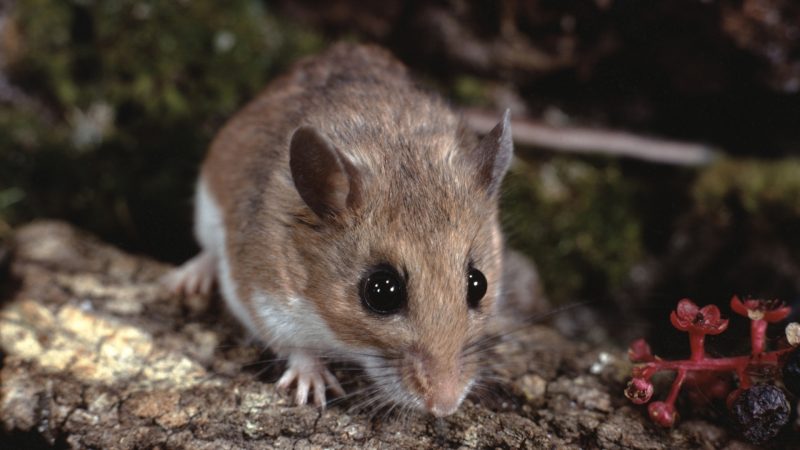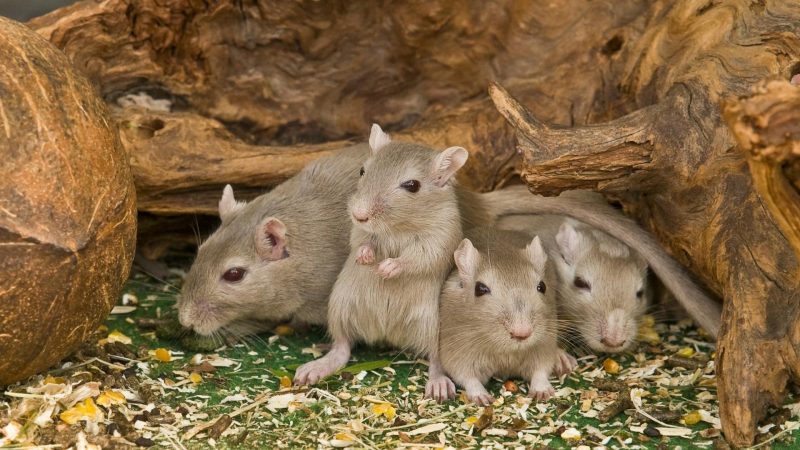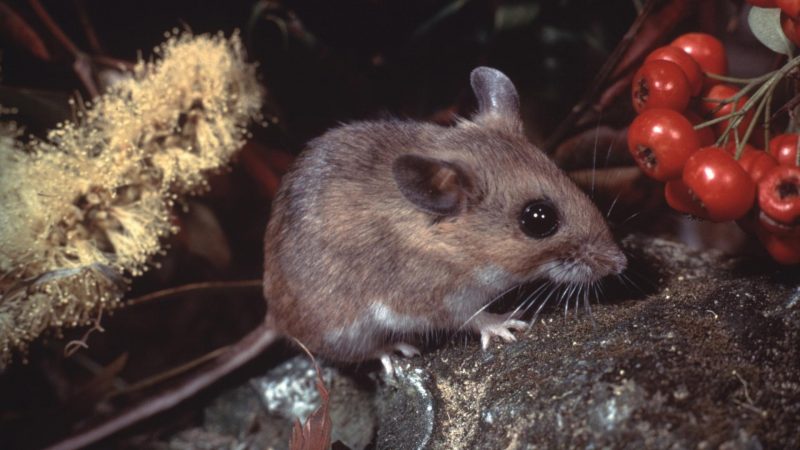When you hear the word mouse, you would usually think of that small creature you saw running stealthily around your kitchen or that tiny rodent you caught living under the comforts of your attic. But there are a hundred mouse species in the animal world that are further divided into subfamilies.
What is the difference between the deer mouse and the house mouse? A house mouse is usually less than five inches long with gray, light brown, tan, white, or black fur. On the other hand, a deer mouse can grow to be seven inches long with gray or tawny brown fur on top and a white underbelly and feet.
In this article, we’ll cover these two rodent species identifying characteristics, and the efficient ways of trapping and getting rid of them.
What’s the Difference Between Deer Mice and House Mice?
A deer mouse and a house mouse may look similar to each other, but they also have various distinguishable traits. To shed light on this matter, we have specifically enumerated the differences as well as the similarities between these two mouse species.
Similarities
- They both belong to the order Rodentia, class Mammalia, and phylum Chordata.
- Both of them can navigate in different places by running, jumping, climbing, and even swimming.
- The appearances of their droppings are quite similar as they are both black, shaped like a rod, and resemble a small grain of rice.
- Both of them are vectors of various bacteria and viruses and can carry insect pests such as fleas, ticks, and lice.
Differences
- Deer mice have larger eyes and ears than house mice.
- A deer mouse typically measures seven inches from its nose to its tail, while a house mouse is less than five inches from nose to tail.
- A deer mouse’s fur is gray or tawny brown on the top and white on the underbelly and feet, while a house mouse’s fur is in the colors light brown, tan, gray, black, and white.
- A deer mouse does not have hairs on its tail, while a house mouse’s tail is filled with hairs.
- Deer mouse usually resides in rural areas such as farms, agricultural fields, woodlands, grasslands, brushlands, meadows, parks, and forests, while house mouse is living most of the time with humans in houses, offices, and other urban structures.
- A deer mouse is known for its tendency to hoard food and carry it back to its habitat while a house mouse directly eats the food it found in a certain area and leaves it thereafter.
- Deer mice may transmit Hantavirus Pulmonary Syndrome since they can be a Hantavirus carrier, but a house mouse can transmit Lymphocytic Choriomeningitis, Rickettsialpox, and Leptospirosis.
- Both of them can jump and climb, but house mice are more adept at jumping while deer mice are more skilled in climbing.
- The deer mouse is more susceptible to carrying fleas, ticks, lice, and other ectoparasites inside a home as they regularly stay outside than a house mouse.
- A house mouse is prone to rodent baits and traps, while a lesser risk is attributed to a deer mouse.
Related: Common Types of Mice You’ll Find in Your House | Identification, Habitat, and Behavior
Are Deer Mice Common in Homes?

It is uncommon for deer mice to invade homes and residential areas since their habitats are found in meadows, fields, forests, and farmlands. However, they may reach the houses of humans to search for food or if the said area contains protective sites where they can set up their nests. This may also happen if these mice cannot withstand the extreme cold weather and are forced to look for warm places to stay.
Why Do They Call Them Deer Mice?
These rodents are called deer mice because they resemble the color pattern of white-tailed deer. Just like the said animal, a deer mouse also has a grayish to tawny brown back with a white underbelly and feet.
Where Does the Deer Mouse Live?
A deer mouse may live in a diverse range of habitats. You may find them residing in agricultural fields, prairies, woodlands, dry tropical environments, grasslands, deserts, and brushlands. However, you may also discover their presence in alpine areas, boreal and temperate islands.
Are Deer Mice Harmful?
Deer mice can be harmful when they become reservoirs of contagious viruses. Once humans are exposed to these microorganisms, there is a possibility of acquiring infectious diseases that can be life-threatening if not managed right away.
Furthermore, because they are constantly outside, they will attract additional bug pests such as lice, fleas, and ticks that can be a source of various health issues and problems.
Do Deer Mice Get Along With Other Mice?
Most of the mouse species can live together with other mouse types because they are considered social creatures as to their own kind. However, if this setup opens them to exposure to humans and potential predators, this familiarity with other mice may change, and they may relocate to other places.
Do Deer Mice Carry Disease?
Deer mice are known to be vectors of Hantavirus that can cause a disease called Hantavirus Pulmonary Syndrome. It is transmitted when a person comes in contact with an infected deer mouse, including their urine and droppings.
This can also be passed to humans when the latter inhale dust particles from contaminated urine and wastes. Common symptoms of this illness include fever, muscle pains, fatigue, headache, dizziness, nausea, abdominal pain, chills, and vomiting.
Although the prevalence of hantavirus diseases may differ from one geographical location to another, it is said that only 10% to 15% of the deer mice tested become positive for the presence of the said virus.
What Attracts Mice in Your House?

There are two possible reasons why a mouse keeps on coming back to your place. First is the presence of food and provisions that were made accessible and available for them. It includes food containers that were not closed tightly or meals that were not stored properly.
The second is that your house may be conducive for their nesting needs due to the presence of warm areas, places filled with clutter, and the opportunity to be isolated from people and natural enemies.
Is It Common to Have Mice in Your House?
It may be common to have mice in your house. These small creatures are skilled scavengers, so they will constantly hunt for food to eat to survive. Your house might also have humid areas that are far from people, so do not be surprised if you can see them lurking around your place. Bear in mind that their presence in your abode does not necessarily mean that your surroundings are unclean or unsanitary.
Where Do Mice Hide in a House?
Mice are attracted to warm temperatures, clutter, and places that are secluded from people and predators. This description excellently fits attics, wall voids, garages, crawlspaces, and spaces beneath heavy furniture and cabinets. They may also hide in areas near the kitchen or pantry due to their close proximity to food.
What Do Mice Hate the Most?
Mice hate the scents of certain spices and herbs such as cayenne pepper, peppermint, cloves, cinnamon, and mint. They also don’t like the odor of vinegar, ammonia, tea bags, and dryer sheets. Thus, it is strongly recommended to use these items as natural repellents if you want to get rid of them.
Will Mice Go Away on Their Own?
Mice may go away from their habitat if they can no longer find food in their present surrounding or if their atmosphere is no longer conducive to their lifestyle. Other than that, these creatures will not usually go away on their own, so there may be a need for pest professionals.
What Is the Best Way to Get Rid of Deer Mice?

Getting rid of deer mice may necessitate a combination of various products and techniques. To effectively eradicate them, it is best to follow these measures:
1. Use snap traps , electrocution traps , or glue boards in capturing mice. You can utilize food attractants such as peanut butter and mix it with oats or cereals to entice the deer mouse to go near it.
- Reliable And Sanitary Pest Control - Free your home from unwanted...
- Set It And Forget It - Say goodbye to ineffective, exterminator...
- Successfully Capture Rats – No Escape - Forget about false...
- Easy To Use Multiple Times - Unlike traditional, wood traps that...
- Get Your Reliable Trap - Being so sure about the top pro quality...
2. Apply natural deer mouse repellents like peppermint, cloves, cayenne pepper, and cinnamon, or chemical repellents and rodenticides that can be bought in stores and markets.
3. Natural enemies of a deer mouse can also be helpful in getting rid of them such as owls, bobcats, snakes, weasels, foxes, and skunks. Dogs and cats can also hunt and kill the said mouse type.
Related: Mice Control: How To Get Rid of Mice?
How Do You Easily Trap a Mouse?
If you want to easily trap a mouse, you may employ the following strategies:
- Look for the possible entry points of a mouse. These sites are usually surrounded by mice sebum and droppings.
- Set mouse traps on areas where they usually stay, run, crawl or pass through. You can use homemade traps with the use of a bucket and a spoon or cardboard tube or with simple tools such as a glass and a coin. Other than that, you can also buy ready-made traps or glue boards if you don’t want to make your own trapping device.
- Use food baits such as peanut butter in combination with these traps. This is done to attract the mice to come near the trapping tool.
- Monitor the traps regularly and change their position whenever necessary.
- Clean the areas where their nests are found and remove unwanted clutter.
Related: Rodent Pest Control | Types, Control Guide, Prevention, and Products
How to Prevent House Mice and Deer Mice?
Taking the required precautions to keep mice from entering your home is the greatest method to ensure that you never see a house mouse or a deer mouse there. Here are useful tips to prevent them:
- Seal Holes and Entrances – Mice are cunning little animals that can squeeze through the smallest spaces. Therefore, be sure to cover any openings that mice might utilize as entries into your home. Because deer mice are excellent climbers, be sure to look up as well
- Keep Your House Clean – Mice are drawn to food, stowaways, and stacks of paper, which invites them inside your house. The greatest strategy to keep mice out of your house is to keep it as tidy as you can.
- Get a Cat – One of the most effective methods to prevent mice in your house and to get rid of them if they do find their way inside is to get a cat. Not only are they lovable and cuddly pets, but they can scare off and exterminate any mice that invade your home.
List of Sources
Quinn, N., Baldwin. R. A., Timm, R. M. (2012). Deer Mouse. University of California Agriculture & Natural Resources.
Ecology. (2012). Centers for Disease Control and Prevention.
Timm, R. M. (2011). House Mouse. University of California Agriculture & Natural Resources.
- How to Get Rid of Copperheads | Practical Guide - August 27, 2023
- How to Get Rid of Corn Snakes | What Makes Them Aggressive? - August 27, 2023
- How to Get Rid of Alligators | Safety Measures and Removal Methods - July 16, 2023

